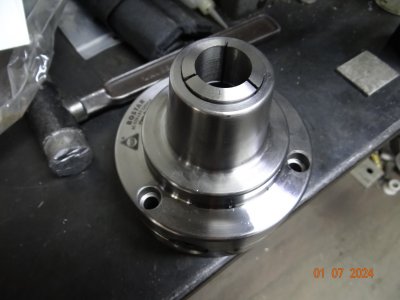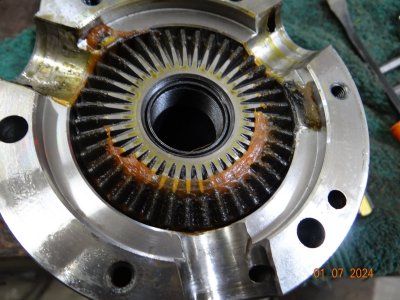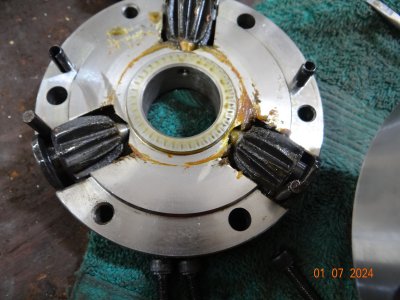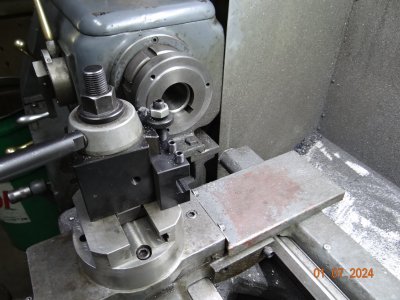Ironman
Ultra Member
I have acquired a used collet chuck and spent the coin for a backing plate. I faced it off true and then cut it back for a register and achieved a tight fit on the register of the chuck.
After assembly I put in a 1" turned and ground shaft I use to check lineup with and I had a TOR of 4 thou. so I loosened it and tapped it a bit and the runout went to 1/2 a thou. Tighten it up and it went back to 3 thou. I could accept a 1/2 but not 3.
I've been told to cut the register undersize and snug the bolts and tap it true and then tighten. This seems the wrong thing to do. I've also had the suggestion to shim the low side of the chuck at the backing plate with a paper shim. I'm wondering if tere were stresses in the casting that were released when machining and this is showing up now.
I'm at the point where I think this back plate needs a skim taken off.
Any bright ideas?
After assembly I put in a 1" turned and ground shaft I use to check lineup with and I had a TOR of 4 thou. so I loosened it and tapped it a bit and the runout went to 1/2 a thou. Tighten it up and it went back to 3 thou. I could accept a 1/2 but not 3.
I've been told to cut the register undersize and snug the bolts and tap it true and then tighten. This seems the wrong thing to do. I've also had the suggestion to shim the low side of the chuck at the backing plate with a paper shim. I'm wondering if tere were stresses in the casting that were released when machining and this is showing up now.
I'm at the point where I think this back plate needs a skim taken off.
Any bright ideas?





